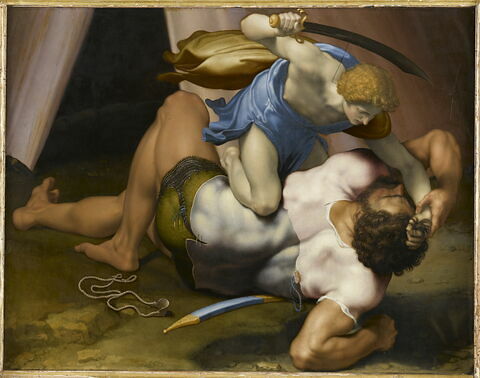#Daniele de Volterra
Text
when florence slaughtered volterra in season 2 ep 4, what were volturi doing?
also, bradley coming out of smoke down the hill as sole survivor, gave strong king arthur vibes like return of once and only king.
#medici the magnificent#Medici#medici#lorenzo de medici#daniel sharman#giuliano de medici#bradley james#king arthur#merlin#firenze#volterra#the volturi#twilight#new moon#medici family#lorenzo the magnificent
43 notes
·
View notes
Text
¡Navigatio Veneris!

Welcome to VenusofVolterra! While I may exhibit a clear bias for a certain pair of Volturi vamps, requests/ asks are open for all Twilight vamps.
This blog is primarily for character analysis, headcanons, and discussing Twilight from a historical lens!
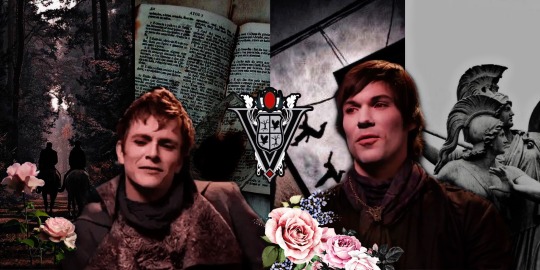
Notes-On Series
Demetri Volturi
Sadism & Violence — Part Two
Medieval Navigation & Astronomy As It Pertains to Tracking
Other/Gen
Vampires and Beauty Standards
Costuming Notes & Observations
Where They Got Demetri Right - In Addition
From the Main Gallery in Volterra
A Young Man Named for Demeter, painted by Michelangelo Merisi da Caravaggio, 1594
Felix de Volturi, as painted by Orazio Gentileschi, C. early 17th century
Girl With Piercing Eyes, painted by Johannes Vermeer, 1663
Headcanons/ficlets/musings
Demetri Volturi
Demetri Participates in Organized Crime, for the Greater Good, of Course!
Demetri’s Pillow Talk Includes Poking Fun at the Cullens
Demetri Takes in Strays
The Picture
Demetri’s Room is a Mess
Demetri’s Ideal Vs. Real Mate
Demetri’s Messy Notebooks
Demetri Would be a Toxic Partner
Demetri and Platonic Bonds
On Demetri’s wife’s death
Felix Volturi
“Let’s Stay In Tonight, Little One”
Felix’s Mate is a Menace to Vases
Wife-Guy Felix
Felix is Goth - In Addition
Felix’s Psychology and Kinks
A Bit on Melissa, Felix’s Lover in Human Life
Heidi Volturi
Heidi and Rosalie Shouldn’t Meet the Same Beauty Standards
Heidi x Rosalie
Other/gen/multi-character
The Volturi & The Culinary Arts
Felix & Demetri: Renaissance Buddy Cops
Mate Bond HCs
Volturi Religion HCs
Demetri, Felix, & Toxic Relationships
Scene Packs
Felix Volturi Scene Pack
Demetri Volturi Scene Pack
Demetri Volturi/Charlie Bewley clips — Interview with the Volturi
Felix Volturi/ Daniel Cudmore — Interview with the Volturi
Demetri tells us what’s the issue with newborns
Historical Asks
Felix Volturi’s Human Life and Romantic/Sexual Preferences
Misc. Asks
Why is VenusofVolterra called VenusofVolterra?
How can any of the vampires be poc if venom sucks the pigment from their skin?/ Felix and Demetri may have been intended to be POC.
How would one even win Demetri’s heart if in the Twilight universe?
How I Make My Vampire Visualizations
How old are the Volturi?
What are the Guard’s Kinks?
Sexuality HCs for the Volturi
How the Volturi Works
Do the Volturi Care When They Hear Each Other Having Sex?
How Often Do Members of the Guard Have Sex?
Character tags
Demetri • Felix • Heidi • Jane • Alec • Aro • Caius • Marcus • Amun
Other tags to check out
Musings • Volturi playlist • historical twilight • vampire visualization

#PLEASE let me know if something here doesn’t work right#twilight#demetri volturi#the volturi#felix volturi#aro volturi#alec volturi#jane volturi#volturi#caius volturi#the twilight saga#amun twilight#twilight breaking dawn#twilight eclipse#masterlist
71 notes
·
View notes
Text
18 febbraio 1564: 460 anni fa passavo a miglior vita
460 anni fa, il 18 febbraio del 1564, morivo a Roma nella mia casa a Macel de’ Corvi mentre i miei amici più cari al mio capezzale, mi leggevano i passi dei Vangeli che narrano la Passione di Cristo.
A tenermi per mano nell’ora del trapasso c’erano Daniele da Volterra, Diomede Lioni e il mio amato Tommaso de’ Cavalieri. C’era anche il mio servitore Antonio che da qualche tempo aveva preso il…
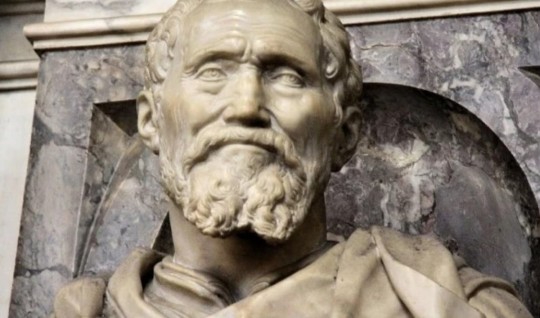
View On WordPress
#18febbraio#accadde oggi#antonietta bandelloni#art#artblogger#arte#artinfluencer#bellezza#english#Firenze#life#Michelangelo Buonarroti#rinascimento#Roma#scultura#storytelling
0 notes
Text

Please follow link for full post
Testa,Martinian,Descent from the Cross,St Agnes,Flagellation,Fiorentino,Volterra,Passion of Christ,Brueghel,Census,Meldolla,Orley,Schongauer,SAINT CATHERINE,Macip,Processus,Lamentation,Boulogne,
18 Paintings, Stories from the Bible, as interpreted by Rosso Fiorentino, Pietro della Vecchia, Luca Giordano, Johann Carl Loth, Francesco Ruschi, Valentin de Boulogne, Vincente Macip, Vincente Macip, Martin Schongauer, Barend van Orley, Daniele da Volterra, Francesco Raibolini, Andrea Meldolla, Pietro Testa and Pieter Brueghel, with footnotes #37
#Icon#Bible#biography#History#Jesus#mythology#Paintings#religion#Saints#Zaidan#footnote#fineart#Calvary#Christ
0 notes
Photo

ART by Daniele de Volterra, Moïse sur le Mont Sinaï AKA Moses on Mount Sinai (Detail)
3 notes
·
View notes
Photo
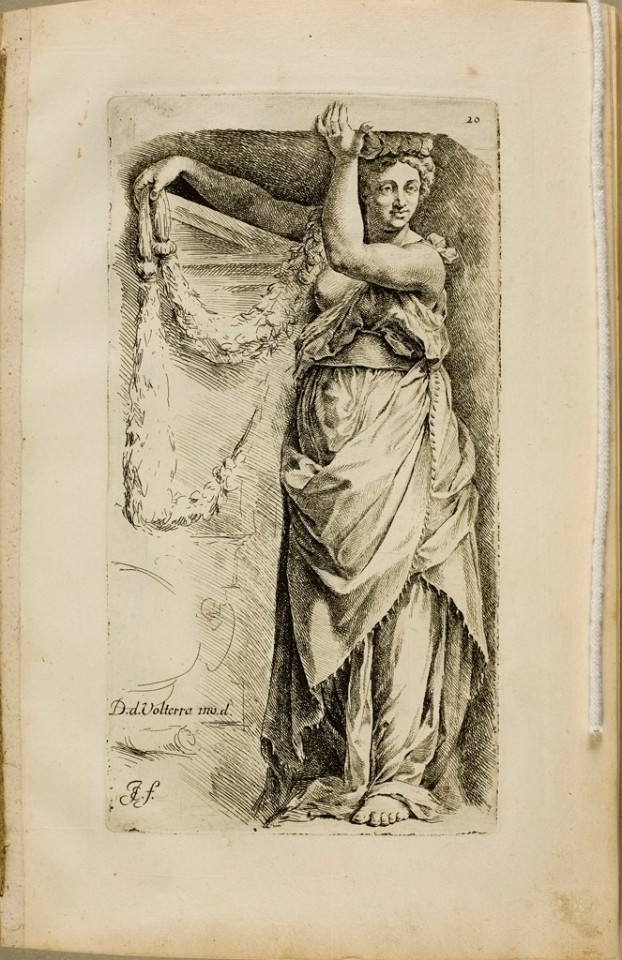
Plate 20: Caryatid, Jan de Bisschop, 17th century, Harvard Art Museums: Prints
One of a pair of caryatids flanking an aedicula. Detail from Daniele da Volterra's lost decorations in SS. Trinita dei Monti, Rome. Harvard Art Museums/Fogg Museum, Transfer from the Fine Arts Library, Harvard University
https://www.harvardartmuseums.org/collections/object/274064
7 notes
·
View notes
Photo
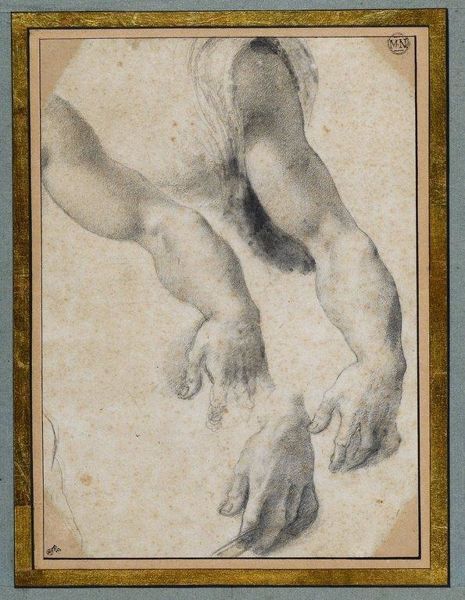
Daniele da Volterra, Two studies of the left arm and a study of a hand
Black chalk on paper
Cabinet des Dessins, Musée du Louvre, Paris
35 notes
·
View notes
Photo
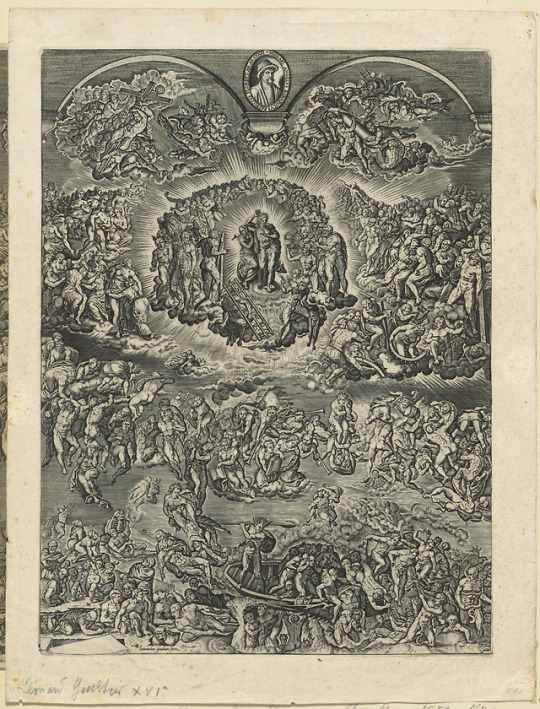
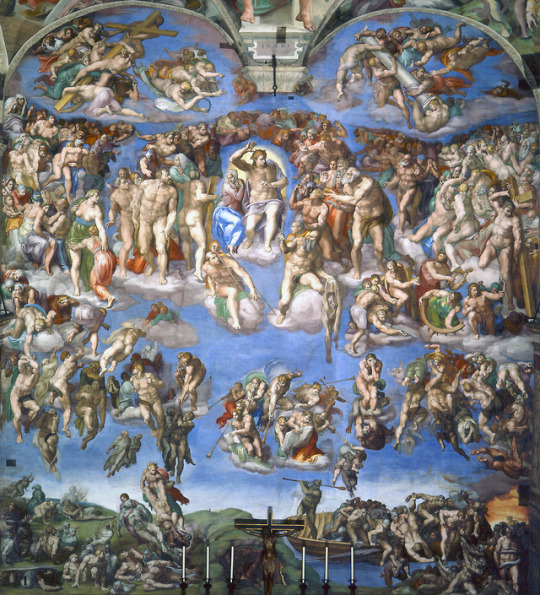
MARTINO ROTA ( CIRCA 1520-1583) antes de la intervención de Daniele da Volterra, el «Braghettone» en el El Juicio Final (Capilla Sixtina) de Miguel Ángel
8 notes
·
View notes
Text
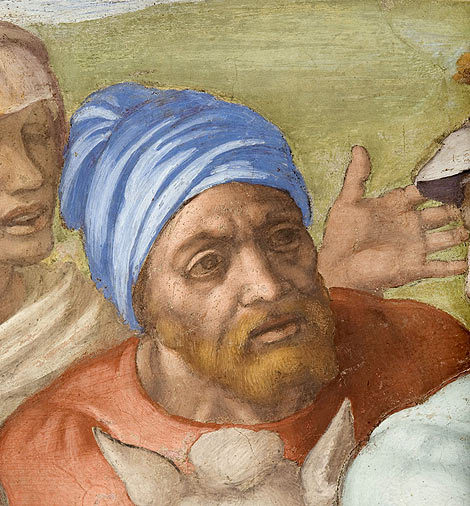
Descubierto un autorretrato de Miguel Ángel en la Capilla Paulina del Vaticano.
El supuesto autorretrato de Miguel Ángel.
Un nuevo autorretrato del genio del Renacimiento Miguel Ángel Buonarroti ha sido descubierto en la recién restaurada Capilla Paulina en el Vaticano, lo que ha despertado el interés de críticos y estudiosos del maestro renacentista, según informa el diario 'La Repubblica'.
Según el jefe de los restauradores de los Museos Vaticanos, Maurizio De Luca, en uno de los dos frescos de la capilla, el de la Crucifixión de San Pedro, aparece un "autoritario" Miguel Ángel con turbante azul como uno de los tres romanos que acompañan la crucifixión, a la izquierda de la escena.
De la misma opinión es el director de los Museos Vaticanos, Antonio Paolucci, quien precisa que "la restauración se ha hecho de forma excelente, el resto son opiniones, lo digo con toda sinceridad, el caballero con el turbante me parece que es Miguel Ángel aunque más joven porque en aquella época tenía 70 años".
Al parecer de los expertos de los Museos Vaticanos se han sumado otros estudiosos del arte y del genio renacentista, entre ellos su biógrafo y restaurador, Antonio Forcellino, quien habla de una "restauración maravillosa que ha devuelto el esplendor original a la Capilla Paulina".
Sobre el autorretrato dice que "forma parte de la tradición de Miguel Ángel" y que "en este caso aparece de modo evidente el tormento que caracterizaba el ánimo del artista, como en cada personaje y en su obra".
En cuanto al turbante con el que aparece tocado, dice que "acostumbraba a protegerse del polvo con un turbante blanco cuando trabajaba", y el hecho de que se muestre a lomos de un caballo es normal porque "a Miguel Ángel le placía cabalgar".
Para la experta Cristina Acidini, del Polo Museale Romano, el rostro de Miguel Ángel se parece mucho al famoso retrato del genio pintado por Daniele da Volterra en 1541 y agrega que "su expresión es de sufrimiento, triste, tensa, como si comprendiese la injusticia que se estaba llevando a cabo" al crucificar a San Pedro boca abajo.
La restauración de la Capilla Paulina
Después de siete años de trabajos, la monumental Capilla Paulina ha recuperado su esplendor, tras concluir la restauración de la decoración pictórica y plástica del recinto que custodia los últimos dos frescos de Miguel Ángel: la 'Conversión de Saulo' y la 'Crucifixión de San Pedro'.
La Capilla Paulina, lugar de culto (en ella se expone el Santísimo Sacramento) y reservada al Papa y la familia Pontificia, fue encargada por el papa Pablo III Farnese (1534-1549) a Antonio de Sangallo, que la comenzó en 1537.
Miguel Ángel fue el encargado de los frescos sobre la 'Conversión de Saulo', que comenzó en 1542, y de la 'Crucifixión de San Pedro', iniciado tres años más tarde, para concluir el conjunto en 1550.
Ubicada a pocos pasos de la Capilla Sixtina, la restauración ha sido dirigida por el histórico del arte Arnold Nesselrat y realizada por el equipo de restauradores de los Museos Vaticanos, que dirige Maurizio De Luca, y entre los que se encuentra el español Javier Barbasán Camacho.
Los trabajos han costado 3 millones de euros (4,2 millones de dólares) y han permitido devolver la luminosidad a los colores elegidos por el genial Miguel Ángel y descubrir a los restauradores las pinceladas del artista toscano.
3 notes
·
View notes
Text

Ariadna dormida (vaciado en yeso)
Departamento: Museo
Nº Inventario: V-011
Colección: Velázquez
Ubicación actual del original: Museos Vaticanos desde 1512.
Ubicaciones antiguas del original: Belvedere
Nombres antiguos: Cleopatra
Observaciones: La escultura original, que el papa Julio II compró a Angelo Maffei en 1512, fue colocada como figura central de una fuente en el patio del Belvedere. Desde el siglo XVIII se conserva en la Galería de Escultura de los Museo Vaticanos.
Identificado durante mucho tiempo como una figura de Cleopatra por el brazalete en forma de serpiente que lleva en el brazo izquierdo, se trata de un vaciado encargado y traído a España por Velázquez. Se corresponde, por tanto, con el estado en que se encontraba la Ariadna del Belvedere tras la restauración efectuada por Danielle di Volterra a mediados del siglo XVI.
Esta pieza estuvo colocada en la Galería del Cierzo del Alcázar hasta el incendio de 1734. En 1744, cuando la Academia de Bellas Artes, recién creada por Felipe V, se instaló en la Casa de la Panadería de la Plaza Mayor, fue uno de los primeros vaciados en yeso enviados para servir de modelo en la formación de los alumnos.
Información de la Real Academia de Bellas Artes de San Fernando, la imagen es mía.
0 notes
Text
18 febbraio 1564: muoio io
La sera di venerdì 18 febbraio del 1564, i miei occhi si chiusero per non aprirsi più. Daniele da Volterra, Diomede Lioni e il mio amato Tommaso de’ Cavalieri mi leggevano i passi dei Vangeli che raccontano la Passione di Cristo nelle ultime ore e io sentivo le loro voci lente come litanie, sempre più lontane e fievoli.
Erano per me tre grandi amici quelli che mi supportarono e talvolta…

View On WordPress
#accadde oggi#antonietta bandelloni#art#arte#english#Firenze#Michelangelo Buonarroti#rinascimento#Roma
1 note
·
View note
Text
Behind the Fig Leaf—a Story of Sin, Censorship, and the Catholic Church

Charles Meynier, Statue of Mercury in a Landscape. Musée de la Révolution française. Photo via Wikimedia Commons.
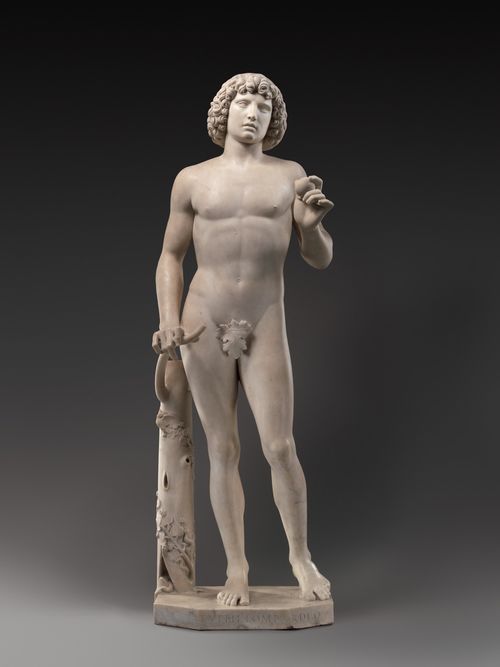
Tullio Lombardo, Adam, ca. 1490–95. Courtesy of the Metropolitan Museum of Art.
Consider the fig leaf: a little piece of foliage that’s shielded the genitals of famous biblical figures and nude sculptures for centuries. It’s a plant that’s become synonymous with sin, sex, and censorship. And in large part, we have art history—and the artists determined to portray nudity even when it was considered taboo—to thank for that.
Take Michelangelo’s famous sculpture David (1501–04), a muscular, starkly naked depiction of its namesake biblical hero. The work scandalized the artist’s fellow Florentines and the Catholic clergy when unveiled in Florence’s Piazza della Signoria in 1504. Soon after, the figure’s sculpted phallus was girdled with a garland of bronze fig leaves by authorities.
60 years later, just months before Michelangelo’s death, the Catholic Church issued an edict demanding that “figures shall not be painted or adorned with a beauty exciting…lust.” The clergy began a crusade to camouflage the pensises and pubic hair visible in artworks across Italy. Their coverups of choice? Loincloths, foliage, and—most often—fig leaves. It has became known as the “Fig Leaf Campaign,” one of history’s most significant acts of art censorship.

Michelangelo Buonarroti, David, 1501–04. Galleria dell’Accademia, Florence. Photo via Wikimedia Commons.

David, 1428-1432.
Donatello
Museo Nazionale del Bargello, Florence
But the fig leaf’s role in art history doesn’t begin with Michelangelo. The plant’s cultural significance can be clearly traced back to the tale of Adam and Eve. The duo, shamed by their nudity after eating from the tree of knowledge, “sewed fig leaves together and made themselves aprons,” as chronicled in the Book of Genesis. Early artistic depictions of the purported events show the once-nude figures sheathed in leaves that obscure their genitals, subtly representing original sin and a fall from grace.
This story—which became integral to Christianity’s teachings—communicated to the religion’s flock that nudity was shameful. By the medieval era, art commissioned by the Catholic Church mostly represented nudity as a sin; it was used to depict people who’d been sent to hell.
But that began to change in the 1400s, when Italian artists—thanks to a mounting interest in antiquities and excavation—rediscovered classical Roman and Greek art. Those ancient marble sculptures were forged in a time when the chiseled nude body represented honor and virtue, as opposed to immorality and vice.

The Creation of the World and the Expulsion from Paradise, 1445.
Giovanni di Paolo
The Metropolitan Museum of Art
This idea inspired artists like Donatello, who started making work that honored the nude body in all its glory. This was a novel idea in his hometown of Florence, where the Catholic Church wielded vast power. His bronze rendition of David (circa 1440) has been cited by scholars as the first known sculpture depicting a completely naked figure since antiquity.
Some of his artist-successors followed suit—namely, Michelangelo. Even after receiving criticism for his own version of David (rendered at a much larger scale and with more pronounced physical attributes than Donatello’s) in the early 1500s, he continued to incorporate nudity into his work.
But as Michelangelo’s artistic career developed, the Catholic Church’s crackdown on “lasciviousness” of all kinds also intensified. This had everything to do with accusations of corruption against the church being made by the Protestant Reformation and its leader Martin Luther. Fearful of losing its flock, the Vatican began ordering reforms across the church—including censorship of nudity in art.
Even so, Michelangelo received an abundance of commissions from Popes and other powerful clergymen during his life, most notably the ceiling of the Sistine Chapel. But sometimes, the Vatican called him out for crossing the line of decency. In the 1540s, some 40 years after his fiasco with David, he pushed his luck yet again—this time, for a wall fresco in the Sistine Chapel depicting the Last Judgement.
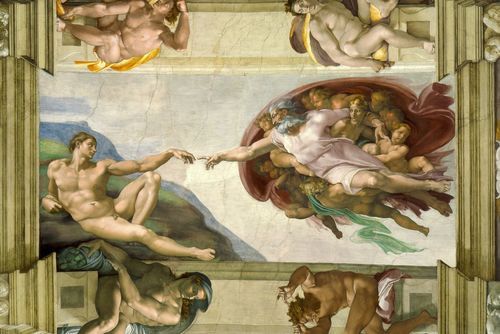
Creation of Adam, Sistine Chapel ceiling, 1511-1512.
Michelangelo Buonarroti
Sistine Chapel, Vatican
Traditionally, that subject had been illustrated with figures clothed according to their social rank, as art historian Peter Russell has pointed out. But Michelangelo stripped them all of both their status and clothing, showing everyone in the buff. Certain powerful figures in the Vatican weren’t happy. Cardinal Carafa and Monsignor Sernini called for the piece to be censored, while Biagio da Cesena, the Pope’s master of ceremonies, called the paintings fit “for the public baths and taverns” rather than a chapel. According to him, it was “disgraceful that in so sacred a place there should have been depicted all those nude figures, exposing themselves so shamefully.”
These passionate criticisms effectively launched the Fig Leaf Campaign, which was formalized in the Council of Trent’s 1563 decree banning “all lasciviousness” in religious imagery. Nude sculptures across Italy, and especially in Rome, soon sported carefully placed metal fig leaves. Some scholars have suggested that many of the plaster and marble phalluses were even chiseled off. As historian Leo Steinberg pointed out in his 1983 book The Sexuality of Christ in Renaissance Art and in Modern Oblivion, French scholar Montaigne wrote that “many beautiful and antique statues” were “castrated” in Rome during his youth by the order Pope Paul IV. (Believe it or not, some have rumored that a drawer of the castrated bits may still hide somewhere in the Vatican.)
The campaign didn’t spare paintings, either. Areas of Michelangelo’s Last Judgement (1533–41) deemed unsavory were painted over twice in the 1500s, and then again in the 1700s, with little swaddles and loincloths added. As Russell points out, a Mannerist artist named Daniele da Volterra was charged with making the additions, which won him the somewhat derogatory nickname “Il Braghettone” (“The Breeches Maker”).
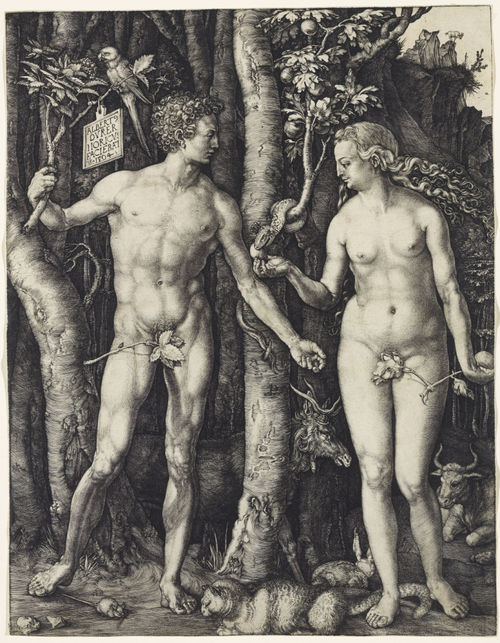
Adam and Eve, 1504.
Albrecht Dürer
Art Gallery of Ontario (AGO)

Masaccio, The Expulsion of Adam and Eve from the Brancacci Chapel. Fresco before and after its restoration. Photo via Wikimedia Commons.
The trend also transformed Masaccio’s 15th-century frescoes in Florence’s Brancacci Chapel. In the 1600s, an unknown artist painted fig leaves over its nude figures—namely, a depiction of Adam and Eve being ousted from Eden. And between 1758 and 1759, Pope Clement XIII swathed even more sculptures in the Vatican’s collection with fig leaves.
The fig leaf phenomenon spread beyond Italy’s borders, too. When the Grand Duke of Tuscany gifted a cast of Michelangelo’s David to Queen Victoria in 1857, a large leaf was promptly sculpted to “spare the blushes of visiting female dignitaries,” according to the Victoria and Albert Museum (V&A).
Luckily, the leaf was made so that it could be removed easily—and hang over the figure’s marble package without damaging it. Today, the sculpture stands completely nude in the V&A, while a small vitrine next to it houses the large leaf.
Over the last 40 years or so, Masaccio’s Adam and Eve (1427) and Michelangelo’s Last Judgement have also been restored. In order to honor the artists’ original visions (and reverse at least some of the damage inflicted by the Fig Leaf Campaign), some of the painted loincloths and leaves have been painstakingly removed from their original surfaces.
But still, censorship and the moral dilemmas nudity inspires still rage on. As late as 1995, the city of Jerusalem rejected a gift from Florence: another replica of Michelangelo’s David. After much back and forth, they finally accepted the influential sculpture—but only after shielding its loins with underwear.
from Artsy News
6 notes
·
View notes
Photo




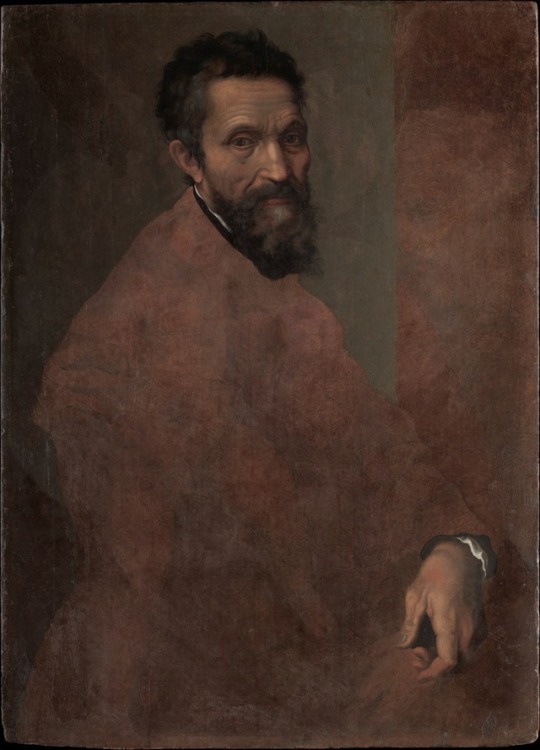




PAINTERS PAINTING PAINTERS
1 André Derain, Henri Matisse, 1905, London, Tate Modern.
2. Élisabeth Vigée-LeBrun, Hubert Robert, 1788, Paris, Musée du Louvre.
3. Andy Warhol, Paul Jenkins, 1979, Amherst, Mead Art Museum.
4. Édouard Manet, Le Repos (Berthe Morisot), 1870, Providence, Rhode Island School of Design Museum of Art.
5. Daniele da Volterra, Michelangelo Buonarotti, 1540, New York, Metropolitan Museum of Art.
6. Hyacinthe Rigaud, Pierre Mignard, 1691, Versailles, Musée National du Château de Versailles.
7. Jean-Baptiste de Champaigne, Double Portrait of Jean-Baptiste de Champaigne and Nicolas de Plattemontagne, 1654, Rotterdam, Museum Boijmans Van Beuningen.
8. Lucien Freud, Francis Bacon, 1956/57, Private Collection.
9. Frédéric Bazille, Pierre-Auguste Renoir, 1867, Paris, Musée d’Orsay.
3 notes
·
View notes
Link

社会风气的败坏与文艺作品的引领和推波助澜有着密切的联系(画中右边,在丈夫脖子上看到的一个病变可能追溯至梅毒)(示意图片:英国画家William Hogarth 约1743年画作局部)
【希望之声2020年9月29日】(作者:〔法国〕Arnaud H.)接前一篇:《从一段艺术史看人类思想的变迁》(上)
矫饰主义画风
辉煌灿烂的文艺复兴宛如从天而降,成熟鼎盛的正统艺术在本次人类历史上的再现响若洪钟大吕,震古烁今。文艺复兴结束后,它的余晖仍然持续强烈地影响着人类艺术史两百多年而经久不散,将神传正统的艺术因素与文化内涵承传了下来。不过,历史的发展所带来的意义与因素从来都不是单一的,阴阳的平衡中不可能只有正面因素,文化的冲击自然也有它负的一面存在。其实,人世间的东西也始终都是如此。尤其在文艺复兴盛期过后,负面的因素也就越来越显露出来了。
时光飞逝,文艺复兴盛期三杰中的艺术巨匠列奥纳多·达·芬奇于1519年在法国逝世。一年后,三杰中另一位象征着文艺复兴艺术顶峰的绘画大师拉斐尔也在罗马离开了人间。两位巨星的殒落让人们扼腕,也标志着意大利文艺复兴全盛时期的渐行衰弱。1527年的罗马之劫更是被史学界定为盛期的结束。虽然三杰中还剩下一位仍然在世,但仅凭以雕塑见长而且孤身一人的米开朗基罗已无法挽回意大利艺术的颓势。常年的战乱、教会的腐败、经济的停滞以及人心的不测等诸多负面因素在群龙无首的情况下逐渐改变着当时艺术家们的思想和心态,也让艺术面貌发生了变化。

米开朗基罗像(图片:意大利画家Daniele da Volterra 1544年前后绘,纽约大都会艺术博物馆藏 )
意大利当时最为推崇的古希腊文化重视人本身的理性对人的启发,即通过人的理智来把握真理,完美人生的价值和意义。这种思想虽然在文艺复兴时期兴起,但也有它的历史:正如前面所说,在基督教早期,一些传教士试图结合古希腊、古罗马哲学论证教义的合理性,形成了教父哲学,其后在中世纪又发展出了经院哲学。虽然夹杂了古代非基督教的因素,但由于这些因素与宗教理论经过历史的磨合,也被教会认可为属于其体系内的产物,所以人们已经习惯于通过理性和哲学观点去论证宗教教义。当混乱的局势与教会的腐败甚至淫乱越来越不得人心时,人们对神的信仰被削弱了,而更为看重现实生活和人本身的理性与自我意识。时间一长,人的思想便逐渐发展到更注重个人的价值,强调个人自我的发展,以人的道理和自身的主动性去改变现实环境,而不是历来所推崇的靠提升德行虔诚等候上帝的拯救。因此艺术家们作品中一直能看到的神性和信仰方面的因素减少了,而越来越多地体现出人性化和享乐主义倾向。当这种人性充满了艺术家的头脑时,原来的理性又逐步让位给人性中的感情,反而不像从前那样理性了。同时,在激烈的行业竞争中,艺术家们都在寻找超越前人的独特风格;为了赢得买家的青睐,又不得不迎合他们随着潮流不断变化的口味;而十六世纪艺术市场的发展也让得到批评家的赞许与艺术商的关注变得越来越重要。各方面因素的作用致使这时的艺术表现形式与风格中出现了更多不同于之前文艺复兴时期的创作手法,它们渐渐背离了列奥纳多·达·芬奇的绘画真实性原则和拉斐尔的古典和谐美,形成了与文艺复兴盛期原有的古典主义相反的特征,后世称之为“矫饰主义”(Maniérisme)。
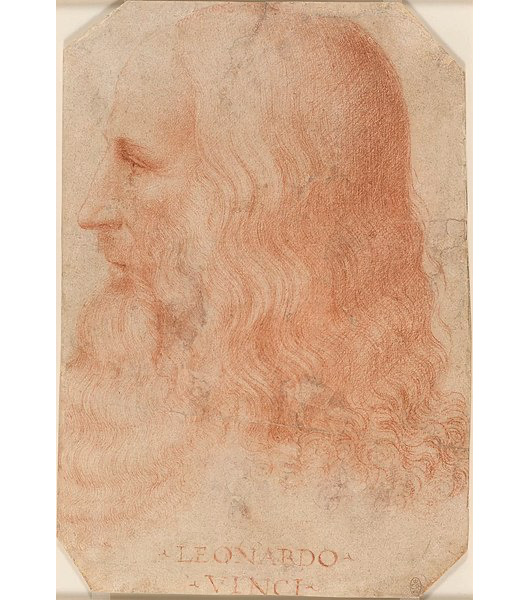
达芬奇像(图片:意大利画家Francesco Melzi绘于约1515–1518年间)
需要指出的是,“Maniérisme”(矫饰主义)作为后世学术界所起出来的一个含混的名词,并没有一个得到学界普遍认可的确切概念,因此不同的矫饰主义画家也有各自独特的风格。虽然画家们绞尽脑汁试图创造出新颖的视觉效果以超越文艺复兴盛期的大师们,但艺术不仅仅局限于外在的形式,还包括艺术家在作品中所要表现的精神风貌和思想内涵,以及通过千锤百炼所铸就的完美的艺术形式来表达作者对艺术的理解与对神圣美的追求。这种内在的东西是蕴含在和谐的构图、准确的形体、真实的色彩等外在视觉因素中的,而从背离外在的基本视觉因素入手却无法体现出更为崇高的内在精神,通过异化形体所达到的“新颖”无异于饮鸩止渴。因为从观众的心理角度看,这种画面人物形体的变异所带来的瞬间的新鲜感持续不了多久就会让人产生违和感,通俗地说就是一幅画得不像的画会让人本能地觉得难受。因此这些作品最终未能在美术史上绽放多大的光彩。
在没有相机的时代,肖像画承载着照片的记录功能,而画得像是第一准则。试想如果有人请画家为他画像,但画家为了达到某种新颖的“风格”而利用透视手法把对方的脑袋或者身体画得好像扭曲变形了似的,又有谁愿意付钱呢?愿意看画得像的作品是人的视觉本能。因此,这些略显变异的风格并未能持续多长时间就渐渐淡出历史了。
裸体艺术的演绎
由于教会势力的削弱与世俗王权的增强,艺术市场的出资方不再像过去一样主要是天主教会及其相关系统,所以这时的艺术题材和种类相对于原先清一色的宗教绘画或雕塑丰富了不少。肖像、历史、风俗、希腊神话等诸多题材开始越来越多地出现在美术作品中。此时各国皇室的审美趣味也比中世纪更为世俗,艺术家们便看准时机,把在意大利锻造得炉火纯青的裸体艺术技巧引入到原本相对而言更为保守的其他国家。
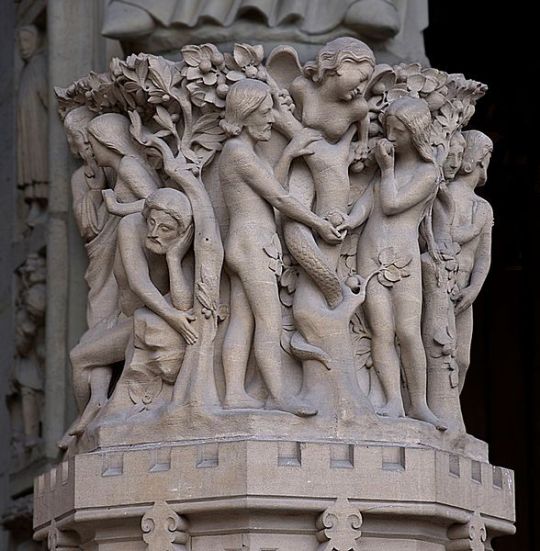
巴黎圣母院西面高浮雕装饰。左侧的主题是创造夏娃;中间部分表现了亚当和夏娃在伊甸园被引诱的情景;最右侧的内容是亚当夏娃被逐出伊甸园。由于当时艺术作品表现的形象必须遵循圣经的记载,因此他们皆为裸体(图片:维基)
实际上,艺术作品中的裸体形像即使在中世纪也并非绝对的禁忌,因为那时也允许根据圣经记载表现裸体的亚当和夏娃,或者描绘被打入地狱里的恶人,比如十三世纪被安置在巴黎圣母院里面与雕刻在建筑外面的亚当和夏娃的雕塑都是不穿衣服的。只是那时的观点认为原罪之后的裸体与基督教的禁欲宗旨相背离,容易勾起人的欲望,有伤风化,因此裸体形像往往与羞耻、肉欲、罪孽、魔鬼等概念联系在一起,除特殊情况外一概予以禁止。
然而意大利的文艺复兴却带来了另一种解读。奥斯曼帝国崛起后,入侵并灭亡了拜占庭帝国(即东罗马帝国)。许多当地学者带着大量古希腊、罗马的艺术珍品和各类哲学、历史等古代典籍逃往西方避难。这使得欧洲,尤其是离拜占庭最近的意大利结合本土的考古成果,得以更深入地了解古代辉煌的文明和艺术成就,其中自然包括了古希腊及罗马时期大量出现的裸体艺术。
古希腊人认为,宇宙间最美的形象应该是伟大的神,而古希腊的神又仿照自己的形像创造了人,所以人世间不可能有比健美的人体更美的东西了。因此,古希腊艺术家们在他们的艺术作品中尽情讴歌人体之美——实际上这与欧洲大部分民族以裸体为羞的观念大相径庭。但这一观点发掘出来之后被文艺复兴时的意大利艺术家们借鉴了——因为基督教也认为上帝按照自己的形像用泥土造了人。神的形像是完美的,而人体这一仿制品也因此具备了美的特质。
开始时,意大利艺术家以裸体形像塑造希腊文明中的神话人物或古籍上记载的不穿任何服饰的神,用来表现不被带有低下的羞耻观念污染的圣洁和纯粹的“真”,因此没有什么色情意味。但随着时代的发展,由于对此类作品的订购者增多,裸体画逐渐形成了潮流,画家们各自又有不同的思想基础和审美趣味,同时出资人和欣赏者大多也都是七情六欲俱全的常人。不少委托人买这些画并不是为了在公众面前展出,而是用作私人欣赏与收藏,或在上流社会中作为赠品来打通人脉。慢慢的,作品中的裸体人物虽然仍被冠以“维纳斯”(Vénus)或“阿芙洛狄忒”(Aphrodite)之类女神的名字,但实际上人们都知道,这些名字只不过是为表现一丝不挂的性感美人而在名义上的一种掩饰和借口罢了。那个时代并不存在专业人体模特这个行当,画家画裸体时的主要模特基本上只能是一些容貌出众的高级妓女。她们都收入不菲,住在豪华的房子里,并且在诗学和音乐上很有造诣,但这举手投足的优雅与虚幻的美貌却改变不了她们内心的本质。因此以妓女为模特所描绘出的女神形像是否能体现出圣洁崇高的神性就需要画家自身的修为。当艺术家思想中那份对圣洁神性的虔诚消失后,人们所看到的只不过是些技术高超的赤裸裸的色情画罢了。
由于社会潮流的污染与人心中信仰的削弱,人们也没有去责问为什么一个信天主教的画家却要去画古希腊、古罗马文化中这些别的体系的神。虽然当时西方的信众不一定听说过佛家“不二法门”这个名词,但在平日里也是学习过基督宗教中相类似的教义的。这些异质的东西进一步削弱了宗教信仰的力量,越发使宗教信仰难以继续维持人的道德。同时,普通凡人大众自身的欲望让他们即使面对不含色情意味但又好看的异性裸体画或雕塑时也会产生情欲方面的刺激。因此,即使艺术家在艺术创作时的思想是纯净的,但如果所绘制或雕塑的作品是裸体形像的,也可能激起观赏者的情欲,所产生的社会影响也仍然是负面的。
色情艺术直接刺激人的感官,严重破坏着现实生活。十九世纪瑞士着名历史学家布克哈特(Jacob Burckhardt)在他的研究中也证实了文艺复兴时期意大利普遍存在的婚外情现象与婚姻家庭道德的堕落所导致的社会危机,他写道:“这个时期意大利的一个特点是:在这里婚姻及其权利比任何其他地方都更加频繁地和更有意识地遭到践踏……夫妻不忠的事情无疑是屡见不鲜的,并且在某些情况下还导致了血腥的复仇。”这些社会风气的败坏与文艺作品的引领和推波助澜有着密切的联系。
失去道德约束而纵欲的后果并不仅仅体现在家庭及社会危机上。据医学史书记载,1494年到1495年间,意大利的那不勒斯(Naples)首次大规模爆发了一种死亡率很高的性传染病,随后蔓延到整个欧洲,就是后来人们所说的“梅毒”。由于缺乏有效的治疗手段,这种疾病很快导致了数百万人死亡,震惊了各国。人们惊呼这是上帝对下界淫乱的惩罚,才不得不开始对自己的欲望加以约束。事实上,当人被强烈的情欲控制的时候,即使面对可能染病甚至死亡的威胁,还是有人铤而走险,这一点从历代都有大量感染人群就可看出。为了控制病情,人们只得求助于非常损伤身体、副作用极大的水银疗法。直到二十世纪四十年代前,人类都未能发现有效医治梅毒的良方,因此唯一最有效的防病途径就是洁身自好。
当时欧洲道德水平相对平稳的人群对意大利放纵的享乐主义做法是很看不惯的,在十六世纪的英国甚至流传着一句极端的谚语:An Englishman Italianate is a devil incarnate. (一个意大利化的英国人就是魔鬼的化身。)从莎士比亚(William Shakespeare)的剧作中有多少意大利人被描绘成道德堕落、奸诈狡猾的恶徒就能看到意大利式的意识形态并没有得到所有北方国家的认同。但莎士比亚本人也未能逃出这种影响,他的《维纳斯与阿都尼》(Venus and Adonis)等作品其实也在这方面描写得相当的露骨。从梅毒在欧洲各国的流传看来,那时欧洲整体上已经走到了一个道德下滑的阶段,而不仅仅是哪一个国家不好。因为这种疾病90%以上是靠性接触感染的,一个国家的淫乱程度就与发病率成正比。

莎士比亚画像(图片:英国画家John Taylor 1610年绘)
这种纵欲和享乐主义的思潮被包装在精美的艺术技法里,从感官上又让人难以看到它不美的一面。在不少人眼中,意大利文化、艺术上的繁荣兴旺体现的是当时最领先的学术思潮,尤其在艺术技巧上远超其他地区、令人叹为观止的精妙又给人造成一种意大利文艺上什么都好的错觉。表面的浮华让人不容易更多地去考虑深层本质上的东西。由于艺术作品对人的感官能产生最直接的刺激和感染,因此它对人道德的影响也是最有力的。文艺作品中的反复渲染会让接触这类作品的人群逐渐同化作品所表达的思想,这种思想在人群中的扩大就会形成社会整体舆论和道德观念的改变。虽然那时社会上大多数人仍然信教,甚至有相当大一部分还是热情的宗教徒,但道德下滑后的行为却与圣经上的要求大相径庭了。
此时各国本土的画家也明显地受到了更多这类思潮的熏染。比如从十六世纪开始,法国也有了类似的裸体画。大量裸体画的引入虽然让画家们更熟悉人体结构的绘制方法,让绘画技法提升到了一个新的高度,但其副作用也是不言而喻的。这一点从法国国王弗朗索瓦一世的姐姐玛格丽特·德·那瓦尔(Marguerite de Navarre,1492-1549年)写的《七日谈》(L’Heptaméron)就能看出那时的贵族们脑子里想的都是些什么。面对愈演愈烈的色情风所带来的大规模性病蔓延和宗教改革派的愤怒声讨,1561年1月底三级会议(États généraux)结束后,法国宣布禁淫令,关闭了妓院和男女混浴的公共澡堂。虽然卖淫活动只不过从此开始转为地下进行,但毕竟有所收敛。

法国国王弗朗索瓦一世的姐姐玛格丽特·德·那瓦尔(Marguerite de Navarre,1492-1549年)(图片:Jean Clouet 1527年前后画作)
1563年,历时18年的特伦托会议(Concile de Trente,1545-1563年)终于降下帷幕,针对马丁·路德(Martin Luther)的宗教改革做出决定性回应,并拿出了具体方案。由于当时绝大部分人都是宗教信徒,所以这些措施也涉及到了人们生活的方方面面。在艺术作品上,裸体开始被禁止了,从前绘画和雕塑中含有裸体人物的名作都被当时的艺术家修改,通过加上一些衣饰或花草、树叶遮挡在生殖器上,避开直露敏感部位。同时,由于察觉到艺术界滥用宗教主题的乱象,会议决定此后教会将对宗教图像的内容进行严格审查,要求艺术家描绘宗教故事时应呈现庄严神圣的场景,并强调艺术对美德的宣扬作用。
人文主义的冲击
谈到文艺复兴那段历史就不得不说一说人文主义了。事实上今天人们口中的“人文主义”并没有一个统一的定义,因为在不同的时代与不同的文化背景下出现过不同的人文主义理论,其中也有不少互相冲突甚至对立的观点和立场。从两千多年前的“Humanitas”这一古典拉丁语来源,到十八世纪出现“Humanism”这个词,过程中经历了众多各类因素丰富其内涵。这个词传到东方后被日本人译作“人文主义”,然后中国人便采用了日语的说法。而史学界一般则习惯于把十四到十六世纪间不同于中世纪的一种更为关注人自身理念的思想风貌称为历史上的“人文主义”,可以看作是涵盖于文艺复兴期间的一种思潮。
其实本文从前面谈到“人文七艺”时开始就已经讲到人文主义的因素了。也就是说,人文主义并不是从文艺复兴时期才开始出现的,而是随着漫长历史的发展,在原始宗教一步步走向末法的过程中,其早期纯正的物质场逐渐参杂进异质的东西而不知不觉受到破坏。在宗教的成住时期,因为原始宗教强大的正能量的作用,社会上各种纷杂的其他学说、理论自然没有能量撼动人心归正后所形成的坚定正念。由于越来越缺乏人们谈论、交流的物质环境,各类其他学说自然就会销声匿迹。而当宗教被逐渐异化,慢慢衰败时,信仰、道德对人心的束缚力就会减弱,人们就会为了“自由”而向外寻找,越来越去求索身外之物。然而,对于思想基础薄弱的人而言,物质的进步往往意味着精神的丢失,因为人心会被对物质的执着钳制住。再发展下去,形成唯物主义观念后就面临着心灵的毁灭。从教廷为筹措资金而贩卖赎罪券敛财,导致信仰商业化开始,其宗教的衰败就已不可避免。
用通俗的话来形容,当原始宗教文化被各种因素渐渐稀释、削弱到罩不住场子的时候,其他因素的势力自然会出现,冲击人的大脑,造成一个新文化思想自由活跃的时期。而思想的活跃与自由同样会导致道德层面逐渐堕落的出现。这也可以说是一种历史安排的必然。正面辉煌壮丽的文艺复兴伴随着背面伦理道德的逐步败坏丧失,甚至连教会在政治、经济上也被世俗化了。
今天不少人误以为文艺复兴时期的人文主义是主张以人为本来对抗神权和教权,实际上并非如此。恰好相反,由于那时仍然有全民信神的环境,尽管道德风气在败坏,但并不影响人们相信有神的存在。所以当时的人文主义学者们基本上都是有神论者,而且大多都是正式的天主教徒,没有人反对上帝的存在,也不反对罗马教廷的统治地位。由于这些人在政治、经济上与天主教会有着密 切的诸多联系,绝大多数人根本不会与教会决裂,至少在形式上也会保持对教会的忠诚。而罗马教廷对人文主义也是持一种庇护的态度,因为人文主义学者们很多都崇尚奢华与享乐,这也很对当时教廷统治者的胃口。那个时代拥有大量财富的教皇和高层神职人员喜好收藏有价值的古董与艺术品,对古希腊、古罗马的古典文化也推崇一时。教皇尼古拉五世(Nicolaus PP. V)、思道四世(Sixtus PP. IV)、利奥十世(Leo PP. X)等人都是人文主义运动在经济上的赞助者。文艺复兴时期的很多文人、艺术家其实都是在教廷的庇护下进行着文化、艺术领域的创新活动。就连今天被学界称为“人文主义之父”的彼特拉克(Francesco Petrarca)都深受阿维尼翁教皇的宠信,享受教会给予的收入。
可见,西方宗教信仰的一步步走向衰弱也是其自身造成的。无疑,原始基督宗教传的东西是正的,而古希腊流传下来的一些修炼方式也是正的,只是走的路不同,但把它们放在一起所造成的结果就是我们看到的历史。原本简单而纯净的修心让位于晦涩难懂的哲学术语和让人心力交瘁的经院辩证,对神虔诚的憧憬与崇敬让位于纷繁复杂的神学理论和越来越表面化的宗教礼仪。到了今天,神佛的神圣真言已被很多人看作是某种附庸风雅的学问,在无神论者那里则被当成了一堆流传已久的笑话。这就是历史给予人类的深刻教训。以史为鉴,在走回传统的路上,看清这一切,用更大的智慧来看待历史与各种思潮,才能让我们真正地做到复兴传统文化,归正自身。
**************************************
限于篇幅,不多写了。本文尽量用通俗的语言略微阐述了一下人类这段思想文化转折历程里的几点有代表性的因素以及笔者一部分非常有限的理解。实际上各种情况、各类因素太多了,事实远不止本文描述的这么粗浅与表面,还有非常庞杂的诸多要素与其他洪大内涵没能写出来。由于不想写成充斥着大量专业术语的美术史或哲学专论,影响非专业者的阅读,在校稿时删去了很大篇幅的专业内容;同时也有意避开了历史上的宗教改革等具体神学内容。在过去时代的人,因为身在其中,所以一时间难以看到“不二法门”、“不外求”等因素对人的修行、信仰乃至整个社会的深远影响。只有当历史走过来后,通观古今,才能深深感慨觉者们传法、讲道时所强调的一些东西对人类和历史是多么的重要。好在今天这个时代,在众多肩负重任的仁人志士的努力下,传统文化、艺术又开始复苏,人心也随之在归正着,未来也将被归正到一个更为纯净的状态中去,展现出神传文化真正的辉煌。
(全文完)
参考书目:
Arnaud Hu, 《 L'art et l'esprit de la Renaissance française 》, 2017
Claude Soret, 《 156 curiosités de Venise 》, 2006
Colin Jones, 《 The Cambridge Illustrated History of France 》, 1999
École du Louvre, 《 Histoire Générale de l'Art 》, 2006
Eric Dursteler, 《 A Companion to Venetian History, 1400-1797 》, 2014
Horst Waldemar Janson, 《 Histoire de l'art de la préhistoire à nos jours 》, 1962
Jacob Burckhardt, 《 La Civilisation en Italie au temps de la Renaissance 》, 1860
Jacques Barzun, 《 From Dawn to Decadence: 500 Years of Western Cultural Life, 1500 to the Present 》, 2000
Léonard de Vinci, 《 Traité de la peinture 》, 1651
Marc Venard & Anne Bonzon, 《 La religion dans la France moderne XVIe-XVIIIe siècle 》, 1998
Martin Kemp, 《 The Oxford History of Western Art 》, 2000
William Fleming, 《 Arts and Ideas 》, 1955
William Shakespeare, 《 Venus and Adonis 》, 1593
本文章或节目经希望之声编辑制作,转载请注明希望之声并包含原文标题及链接。
诺曼底印象主义系列艺术活动:历史对创新不具有垄断权 - 法国文艺欣赏
桃园地景艺术节 体验在地竹艺术
刘嘉玲与好友聚会艳压众人 豪宅曝光似艺术宫殿
正修文保修复新创中心揭牌 延续艺术品生命
澳洲华裔艺术家巴丢草获哈维尔国际创意异议奖
安卓翻墙APP、Windows翻墙:ChromeGo
AD:搬瓦工官方翻墙服务Just My Socks,不怕被墙
原文链接:从一段艺术史看人类思想的变迁(下)
原文链接:从一段艺术史看人类思想的变迁(下) - 新闻评论
本文标签:人文, 作品, 宗教, 意大利, 文艺复兴, 梅毒, 画家, 艺术, 艺术家
0 notes

